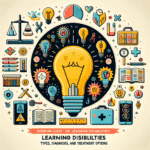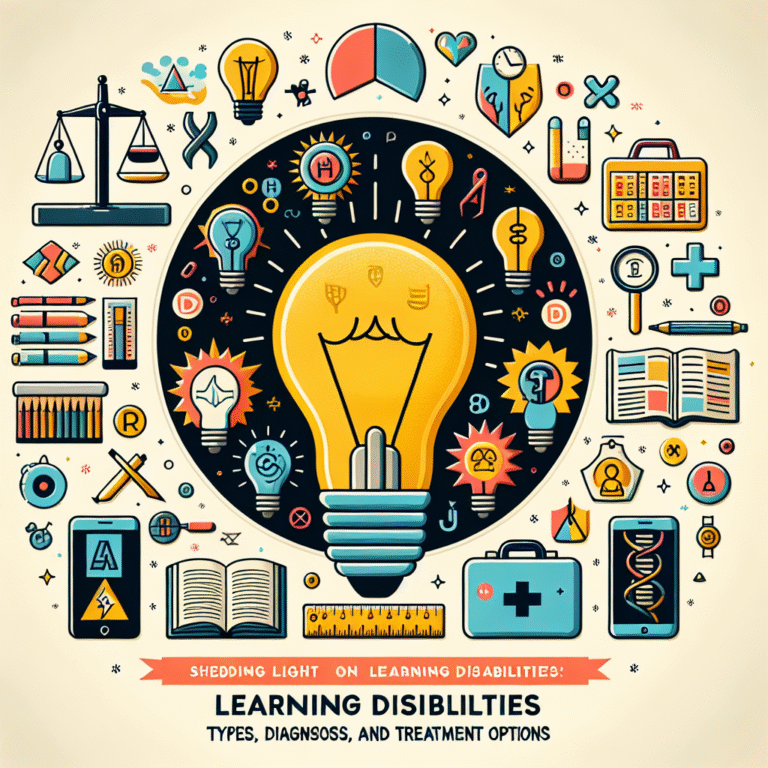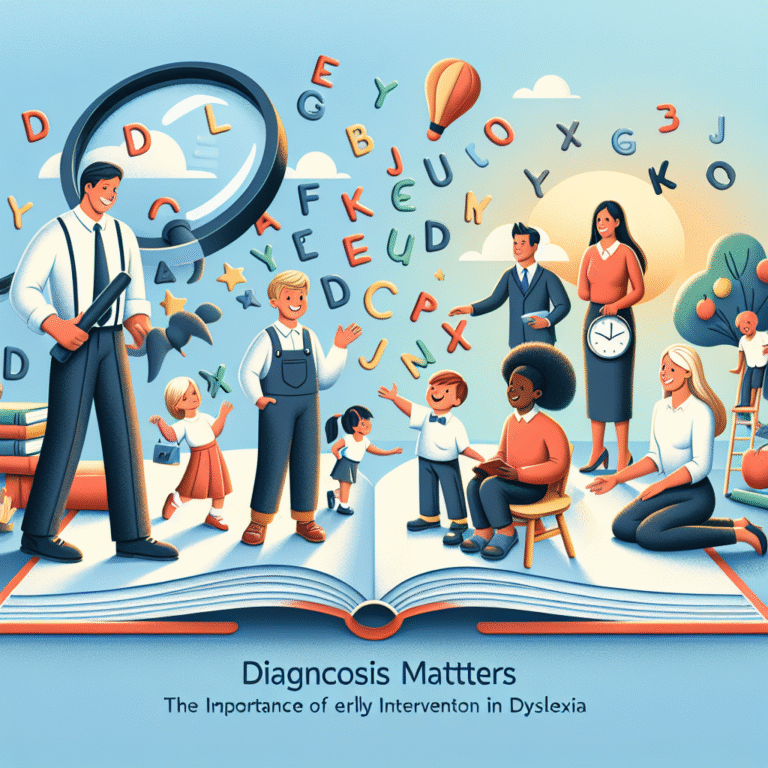Understanding the Connection: Phonics Instruction and Its Impact on Learning Disabilities
Introduction
In the ever-evolving landscape of education, few topics ignite as much passion and concern as the intersection of phonics instruction and learning disabilities. Understanding the connection: phonics instruction and its impact on learning disabilities is not just an academic exercise; it’s a lifeline for millions of learners who struggle with reading. With the right approach, early intervention, and tailored instruction, we can rewrite the narrative for children with learning disabilities, equipping them with the tools they need to succeed.
In this article, we’ll explore the essential role phonics plays in literacy development, delve into its significance for students with learning disabilities, and share compelling case studies that illustrate the profound impact of effective phonics instruction.
The Basics of Phonics Instruction
What is Phonics?
Phonics is a method of teaching reading based on the relationship between letters and sounds. It involves systematically teaching students the sounds of individual letters and combinations of letters, enabling them to decode words. This foundational skill is crucial for reading fluency, comprehension, and overall literacy.
The Role of Phonics in Literacy Development
Understanding the connection: phonics instruction and its impact on learning disabilities begins with recognizing that phonics is a cornerstone of literacy. For typical learners, phonics instruction helps reinforce patterns in language, making reading more accessible. However, for students with learning disabilities, this connection can be even more critical.
A well-structured phonics program addresses the specific challenges these students face by providing concrete strategies for decoding and word recognition. The earlier students receive effective phonics instruction, the better their chances for academic success.
The Link Between Learning Disabilities and Literacy
Understanding Learning Disabilities
Learning disabilities can manifest in various ways, impacting reading, writing, math, and other academic skills. Conditions such as dyslexia, dysgraphia, and auditory processing disorders create barriers to learning. As educators and parents, it’s essential to identify these disabilities early on and provide tailored support that meets individual needs.
The Overlap: Learning Disabilities and Phonics Instruction
Research has consistently shown that many students with learning disabilities struggle significantly with phonemic awareness and decoding skills, which are central to phonics instruction. By understanding the connection: phonics instruction and its impact on learning disabilities, educators can tailor their teaching strategies to help these students thrive.
Case Study: The Impact of Early Intervention
Sarah, a 7-year-old diagnosed with dyslexia, struggled to keep up in her first-grade classroom. Initial assessments revealed she had significant difficulty with phonemic awareness. With targeted phonics interventions, including both one-on-one instruction and interactive phonics games, Sarah’s reading skills improved dramatically. Within months, she went from avoiding reading altogether to participating eagerly in class.
Analysis: This case exemplifies the critical role that early, tailored phonics instruction can play in helping students with learning disabilities overcome their challenges. By focusing on multisensory phonics strategies, educators can help these students establish a solid foundation in literacy.
Effective Phonics Instruction Strategies
Structured and Systematic Phonics Programs
A structured phonics program is essential for all learners, particularly those with learning disabilities. Programs like Orton-Gillingham and Wilson Reading System create clear, sequential learning experiences that build on each other.
Table 1: Key Features of Effective Phonics Programs
| Feature | Description |
|---|---|
| Explicit Instruction | Clear teaching of sound-letter relationships |
| Multisensory Techniques | Engaging multiple senses to reinforce learning |
| Individualized Pacing | Allowing students to progress based on their needs |
| Frequent Assessment | Monitoring progress with regular check-ins |
Multisensory Learning Approaches
Multisensory techniques engage visual, auditory, and kinesthetic learning pathways, making phonics instruction more effective for students with learning disabilities. Activities can include using letter tiles, drawing sounds in the air, or tapping out syllables on a desk.
Case Study: Multisensory Phonics in Action
Tommy, a 9-year-old with an auditory processing disorder, initially struggled with phonics. Incorporating a multisensory approach—a combination of visual aids, tactile letter cards, and auditory sound drills—transformed his learning experience. Over the course of several months, Tommy significantly improved his reading fluency and comprehension.
Analysis: This case highlights how personalized, multisensory strategies can enhance phonics instruction for students with unique learning challenges.
The Teacher’s Role: A Critical Factor
Training and Awareness
Educators play a vital role in understanding and addressing the connection: phonics instruction and its impact on learning disabilities. Training teachers to recognize signs of learning disabilities and implement effective phonics strategies can dramatically alter student outcomes.
Collaborative Efforts
Collaboration between special education and general education teachers can create a more inclusive learning environment. By sharing insights and strategies, teachers can better support students struggling with phonics.
Case Study: Successful Collaboration
In a diverse classroom of fifth graders, a special education teacher and a generalist teacher worked together to refine phonics instruction. They utilized co-teaching strategies, blending their expertise to create a supportive environment for all learners. Their efforts led to a notable increase in literacy skills across the board, with particular gains among students with learning disabilities.
Analysis: This example demonstrates how teacher collaboration can effectively enhance phonics instruction, showing the need for a team approach in addressing learning challenges.
The Importance of Early Assessment and Intervention
Identifying Learning Disabilities Early
The earlier a learning disability is identified, the sooner interventions can commence. Regular assessments and screenings in preschool and early elementary years can help pinpoint students at risk.
Implementing Evidence-Based Interventions
Utilizing evidence-based interventions ensures that students receive effective support tailored to their specific needs. Phonics instruction rooted in research can yield significant improvements in literacy outcomes.
Case Study: Early Assessment Impact
During a kindergarten screening, educators discovered that Lisa struggled with phonemic awareness. Early interventions were put in place, including targeted phonics instruction. By first grade, Lisa was reading at grade level and built up a strong foundation for future academic success.
Analysis: This case reinforces the importance of early identification and intervention in fostering a positive trajectory for students with learning disabilities.
Bridging the Gap: Home and School Collaboration
Engaging Parents
Understanding the connection: phonics instruction and its impact on learning disabilities extends beyond the classroom. Engaging parents is crucial in reinforcing phonics skills at home.
Providing Resources
Offering parents resources and training can help them support their children’s learning outside of school. Simple strategies, such as reading together and playing word games, can reinforce skills learned in the classroom.
Case Study: Parental Involvement
In a case involving a family with a child struggling with reading, the school provided parents with training on phonics techniques. Together, they worked on homework exercises and engaged in reading activities. As a result, the child’s reading level improved significantly, and both the parents and child reported a more positive experience with literacy learning.
Analysis: The importance of collaborative efforts between home and school cannot be overstated. Parental engagement plays a pivotal role in reinforcing phonics instruction and supporting children with learning disabilities.
Conclusion
Understanding the connection: phonics instruction and its impact on learning disabilities is crucial for educators, parents, and advocates for children everywhere. Phonics isn’t merely a teaching method; it is a powerful tool that can make a significant difference in the lives of students facing learning challenges.
By embracing effective phonics instruction, ensuring early intervention, and fostering collaboration among educators and families, we can create pathways to success for all learners. The journey may be challenging, but it’s one marked by hope and opportunity.
Actionable Insights
- Advocate for Early Assessment: Encourage regular screenings for early identification of learning difficulties.
- Learn About Phonics Programs: Familiarize yourself with structured phonics programs that cater to diverse learning needs.
- Engage with Families: Provide resources and training for parents to support phonics learning at home.
- Collaborate in the Classroom: Promote teamwork among educators across disciplines to ensure comprehensive support for students.
FAQs
1. What is phonics instruction?
Phonics instruction is a teaching approach that emphasizes the relationship between letters and sounds to help students decode words and improve reading skills.
2. How does phonics instruction help students with learning disabilities?
Phonics instruction provides structured, systematic strategies for decoding words, which is often a challenge for students with learning disabilities. It builds a foundation for reading fluency and comprehension.
3. What are effective phonics programs for students with learning disabilities?
Programs like Orton-Gillingham, Wilson Reading System, and other structured literacy programs provide explicit, systematic instruction that benefits students with learning challenges.
4. How can parents support phonics learning at home?
Parents can support phonics learning by engaging in reading activities, playing phonics-based games, and reinforcing skills taught in school.
5. Why is early assessment important?
Early assessment identifies students at risk of learning disabilities, allowing for timely interventions that can significantly improve literacy outcomes and set them on a path to success.
By understanding the connection: phonics instruction and its impact on learning disabilities, we empower students, promote inclusivity, and inspire a generation of confident readers.









